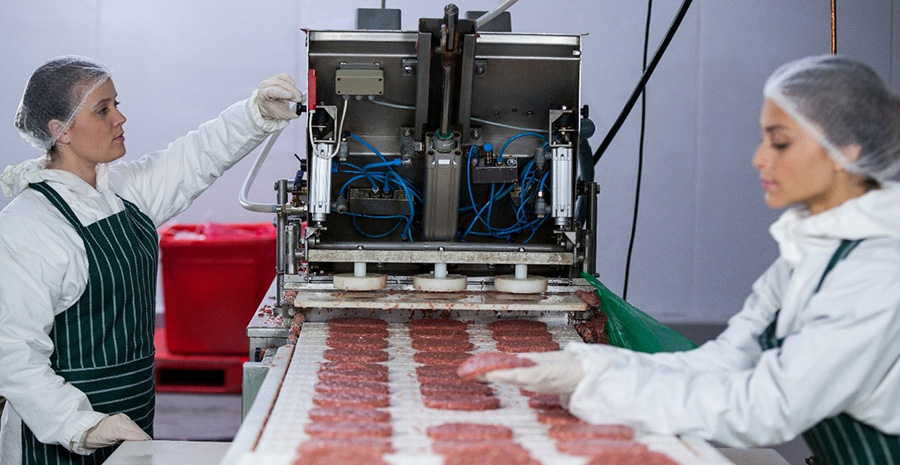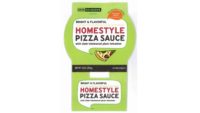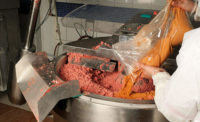Meat processing has its own unique challenges when it comes to food safety. Foodborne illnesses are incredibly common, and you need to have the proper safety processes, procedures, clothing and personal protective equipment (PPE) in place. No one wants to lose the trust of their customers or face a lawsuit when proper food safety techniques can easily be implemented. Here are nine simple ways to improve food safety in the workplace.
1. Start with quality meat
High-quality ingredients do more than make food taste better. Farmers who take pride in the animals they raise are doing their part to improve food safety. There are several diseases and risks that become more common when animals are kept in poor conditions, aren’t eating proper food or don’t have access to clean water. Before purchasing meat, carefully review the farm or processing company you will be working with. Make sure they have a reputation for following all safety procedures, including using the appropriate PPE.
2. Use proper packaging
The Food and Drug Administration has very specific requirements for meat packaging and processing. These guidelines are developed with consumer safety in mind. In addition to knowing these guidelines inside and out, always use new, clean packaging for your products.
3. Implement quality PPE
Handling meat exposes workers to a variety of contaminants and environmental dangers. When choosing PPE, consider:
- What parts of the body do the hazards affect?
- How long will workers be exposed?
- What materials protect against the hazards?
Each situation has its own requirements. For example, the ammonia commonly used for refrigeration in meat-packing facilities is corrosive. Workers need protection for their lungs, eyes, and skin. For short periods, disposable PPE might be sufficient. However, if workers will be around ammonia for longer periods, sturdy reusable gloves and coveralls might be better.
Meat handlers encounter blood, feces, and other biological hazards, risking exposure to swine flu, Q fever, salmonella, and livestock-associated MRSA. They should use PPE made from material that shields against those. Aprons and face guards shield workers from splashes of blood and cleaning chemicals. Masks protect them from breathing in airborne bacteria such as brucellosis.
When using knives, OSHA suggests cut-resistant gloves made from steel mesh. However, when using grinders or band saws, steel-mesh gloves are more likely to become caught, leading to accidents. Choose gloves that fit well so that workers’ dexterity remains unimpeded. Also consider the color. If a glove gets sliced, a bright color like blue is easier to spot. This ensures that no material remains mixed with the meat. For gloves that contact food, check that they meet FDA requirements.
Aprons, hairnets, and coveralls also protect consumers by keeping germs, dust, pet hairs, and other debris off the meat. Outfitting with the proper PPE protects workers while preventing cross-contamination.

4. Pay close attention to temperature
In addition to following the Safe Minimum Internal Temperature Chart published by the U.S. Department of Agriculture, you need to pay close attention to the environment you are working in. Most meat processing areas are kept below 50° Fahrenheit. Commercial kitchens tend to be kept below 78° F. Invest in backup generators and temperature control devices in case there is a power failure. Employees who work in cooler environments might need special PPE to protect them. For example, you might choose a cotton-blend glove for them to wear next to their skin beneath a cut-resistant glove for extra warmth.
5. Don’t skip pest control
Pest control plays a crucial part in food processing. All food, even when kept in optimal conditions, can attract flies, cockroaches, and rodents. Unfortunately, you can't keep pests away using the same methods you would use at home, such as mousetraps, poison sprays, or flypaper. To avoid contaminating products, you will need to work with a pest control expert to keep your facility pest-free and compliant. Pest control experts should be in a clean, appropriate uniform to avoid introducing allergens to the environment. This ensures that no meat is contaminated with peanuts or soy.
6. Keep your facility clean
The area you process meat in should always be kept clean and free of any waste. Some quick cleaning guidelines include:
- rinse all surfaces with hot water
- wash and sanitize surfaces and equipment regularly
- keep the processing area free of paper, trash, and discarded products
- clean up any spills immediately
- follow a regular cleaning schedule
- enforce a strict uniform code.
Make a list of food sanitation best practices, and be sure to follow it closely. In addition to understanding general best practices, check to see if there are any additional local, state or federal guidelines that your facility needs to follow. For example, many locations require separate, sterile areas where workers can change into clean uniforms. This keeps them from bringing outside dirt, bacteria, and germs into the meat-processing area.
Make sure that any employees who use harsh cleaning chemicals have adequate protection, such as face masks, gloves, and non-slip shoes.
7. Enforce a strict dress code
Uniforms don’t just look professional; they help promote food safety. A well-made butcher coat adds a protective barrier between your product and your employee. This helps you to stop cross-contamination. In addition to a white butcher coat, meat processing facilities should require slip-resistant footwear with closed toes and rubber soles. This prevents employees from falling on slick floors. As well as injuring themselves, employees risk transferring debris from the floor to the food. Full-coverage shirts and full-length pants are also necessary for both worker and food safety.
8. Develop a food safety plan
Like all other company guidelines, you should put your food safety expectations in writing. This will also help employees better recognize potential hazards, sanitation requirements, and other safety concerns. Some things to include in your company’s food safety plan are:
- how to handle your product
- how to dispose of unusable products
- how to use personal protective equipment
- proper machine use
- cleaning guidelines
- required uniform standards
- prevention techniques in case of a power failure or other emergency.
Be sure to write detailed how-to guides for each procedure and make the information readily available.
9. Make employee training a priority
Even in a busy environment, you need to ensure every employee has a good understanding of FDA regulations and food safety guidelines. Each worker should understand how, when, and why to use PPE. They should know how to fit their protective equipment and uniforms properly to prevent accidents and food contamination. While you will still need to work closely with your staff to ensure that your company’s food safety guidelines and standards are met, you may also encourage your employees to get food safety certifications from the American Meat Science Association (AMSA) or the North American Meat Institute (NAMI).
Food safety is an important part of the meat processing industry. By carefully following all FDA regulations, investing in high-quality personal protective equipment, implementing your own safety guidelines, maintaining a clean environment, and enforcing a strict dress code, you can greatly reduce the risk of illness and build trust with your customers.
Nick Warrick is sales manager at All Seasons Uniforms Inc.



